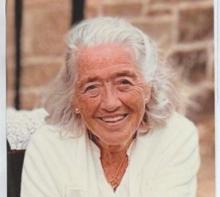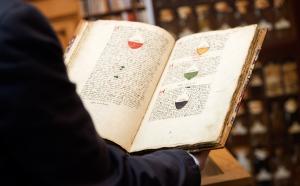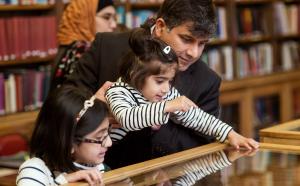
Dr Judith Steel MBE, FRCPE
Dr Judith Steel MBE, FRCPE
Born 12 August 1940, in Bingley, Yorkshire.
Died 18th January 2025, in Edinburgh from a chest infection complicating disability from a spinal tumour.
An Edinburgh graduate, expert on the clinical management of diabetes who, while bringing up her family, made important international contributions to the prevention of complications associated with pregnancy in diabetics . Despite increasing disability and the need for a wheelchair from the early 1990s, she continued an active academic and social life.

Judith Spratt was born in Yorkshire, daughter of a school teacher and a Northern Irish father who had developed a textile business. Educated at Bradford Grammar school, in 1958 she gained entrance to Edinburgh Medical School, one of few female students. She met her fellow student, Michael Steel, during their anatomy classes and they married in 1962. As a student, Judith was impressed by lectures on diabetes by Dr Leslie Duncan, a consultant who had previously been a veterinarian, and attended his Saturday morning clinic, seeing a wide mix of patients, even including occasional diabetic dogs.
She graduated in 1965 with distinction, sharing the Ettles Scholarship with Michael. They spent four months standing in for the superintendent of the Wesley Guild Hospital in Western Nigeria. Judith viewed this as the most intensive period of education and the most rewarding few months of their professional lives. In their pre-registration year at Edinburgh Western General Hospital, they occupied the first ever married quarters. Judith then worked as Senior House Officer in endocrinology at the Western where she not only established a diabetic clinic but also passed the MRCPE and had her first son. She then took a break to have her second son, doing part-time work in the Royal Infirmary diabetes clinic.
In 1972 they spent a year in Kenya where Michael had lived as a child. Judith had read that diabetes did not exist in Kenya but on arrival she met a local consultant, Dr Mngola, who had worked with Leslie Duncan in Edinburgh and had established a clinic which had 1000 type-1 diabetic patients; he appointed her to a part time post at the Kenyatta National Hospital. She found a 16 year old Kenyan boy with extensive language skills who helped her communicate with patients from different tribes. In addition to the diabetic clinic, she helped in thyroid and liver clinics and was on-call for the medical wards. This was so demanding that she arrived an hour late one morning and was dismissed by the hospital superintendent. This proved a relief from the increasing burden and gave her time to spend with their boys and to accept a university appointment at the diabetic clinic.
Back in Scotland, Judith moved to the Royal Infirmary diabetic clinic as a part-time registrar. In this post she became involved with the British Diabetic Association (BDA) and was able to link with Professor Jim Farquhar who led a paediatric service for children with diabetes. She served on the BDA Medical Advisory and Research Committees and, with her family, its diabetic children’s camps. At the Royal Infirmary, she took a special interest in diabetic pregnancies, finding a high incidence of potentially avoidable perinatal mortality and congenital malformations. By 1974, having added a daughter to her family, she started the first pre-pregnancy clinic at the Simpson Memorial Pavilion. She liaised actively with an obstetrician, Dr Frank Johnstone, keeping careful supervision of diabetic women throughout their pregnancies, resulting in a significant reduction in the incidence of congenital malformations.
She published widely, especially on the subject of the care of diabetic women in pregnancy and the importance of establishing pre-pregnancy clinics for them. As a result of her contributions she was regarded internationally as a pioneer in the concept of pregnancy counselling for women with type 1 diabetes. In 1981 she was elected a Fellow of the Royal College of Physicians of Edinburgh. In 1983, she was appointed part-time associate specialist, broadening her commitment to the active control of diabetes, starting an adolescent clinic, and linking with psychiatrists in relation to eating disorders associated with diabetes. For her national activities, in 1992 she was appointed MBE.
In 1993, Judith moved to live in St Andrews where Michael had been appointed to a University Chair, and she transferred to work with Dr Ian Campbell at the Victoria Hospital, Kirkcaldy. As well as seeing routine patients, she joined their pre-pregnancy and adolescent clinics which became linked to the opening of a new Diabetes Centre in 2000. She won a Myre Sim research award from the RCPE to study blindness in diabetic patients and showed that no cases of blindness occurred if eye screening were performed every 1 – 2 years.
In the early 1980s, Judith had developed neurological symptoms in her legs from a spinal cord tumour. Despite two operations, the tumour slowly continued to impact on her mobility. Nevertheless, she continued her active role with diabetic patients. Her other activities included being Chairman of the Scottish Intercollegiate Guidelines Network (SIGN), producing management guidelines, and learning about non-verbal communications and empathy, knowing how important it was for patients to share their thoughts. She continued teaching communication skills to medical students after she had retired, but gradually her mobility became more difficult. Having regularly been seen pushing obese patients around the clinic in their wheelchairs in the past, she became dependent on a wheelchair herself.
Looking back at her career Judith was very positive about the many advances in diabetic care, especially active engagement with pregnancy ensuring healthy babies. She had published 129 articles and two books, one being a summary of her career’s work, “Personal Experience of Pregnancy Care in Women with Insulin Dependent Diabetes”. In 2004, she and Michael returned to live in Edinburgh, spending time with their children and grandsons and managing a charity in memory of their first grandchild, who had died as a baby. She became a skilled decorator of cakes, teaching the art to others. They continued an active life meeting friends and former colleagues, despite her significant disability.
Helen Zealley



